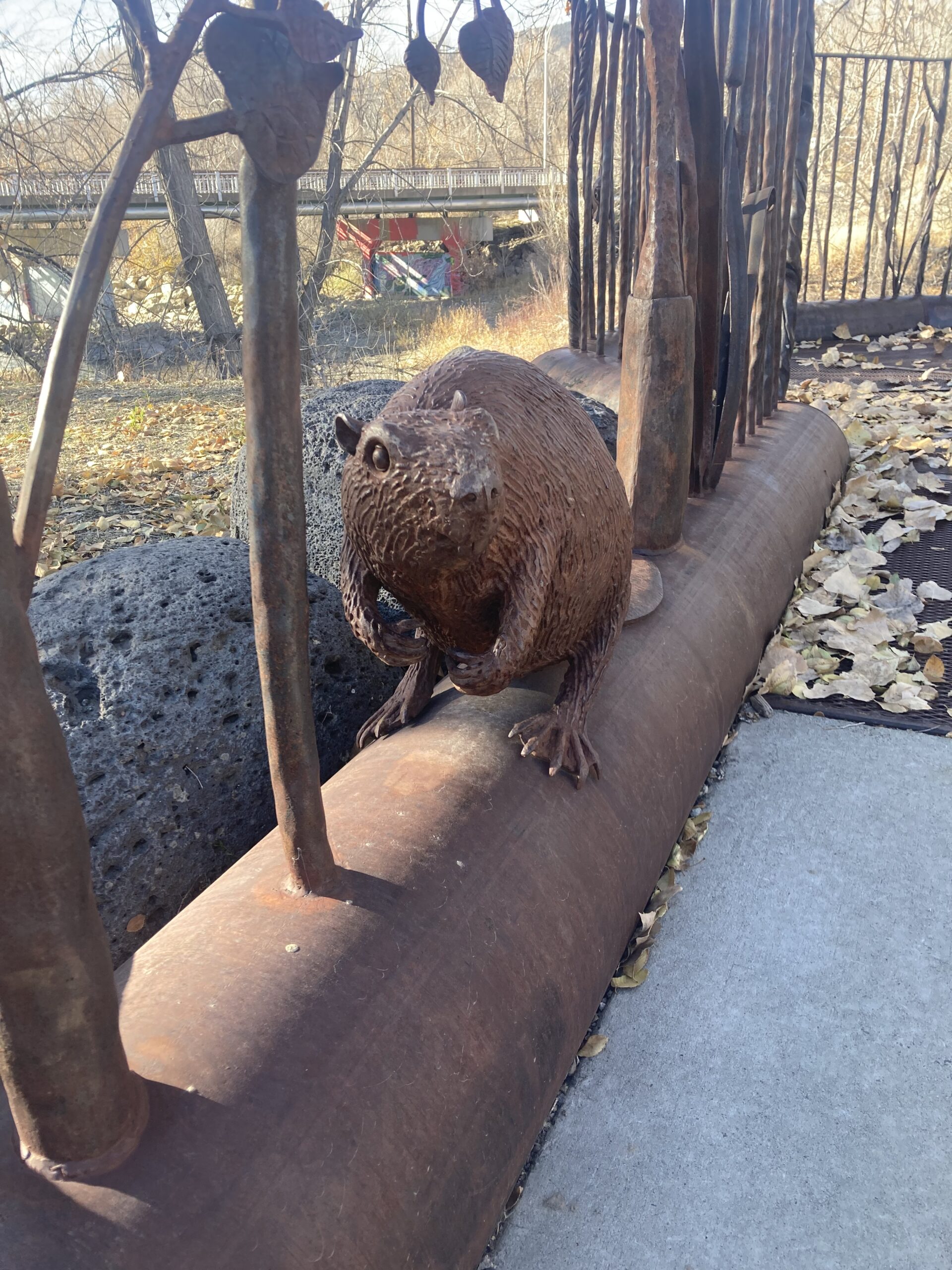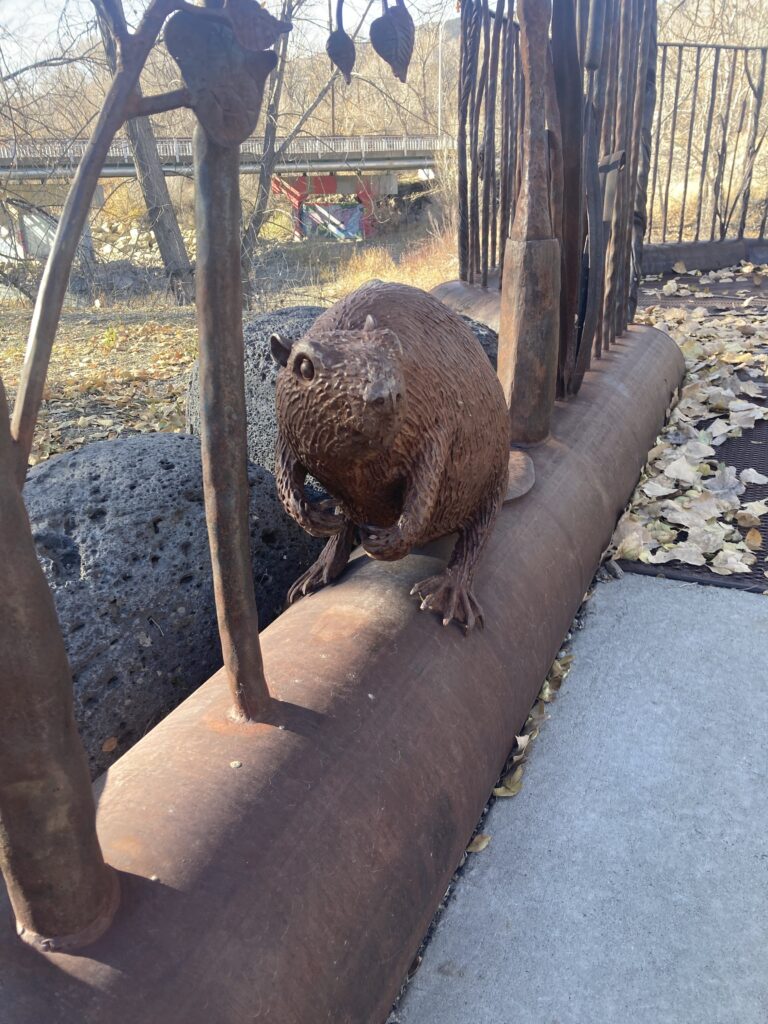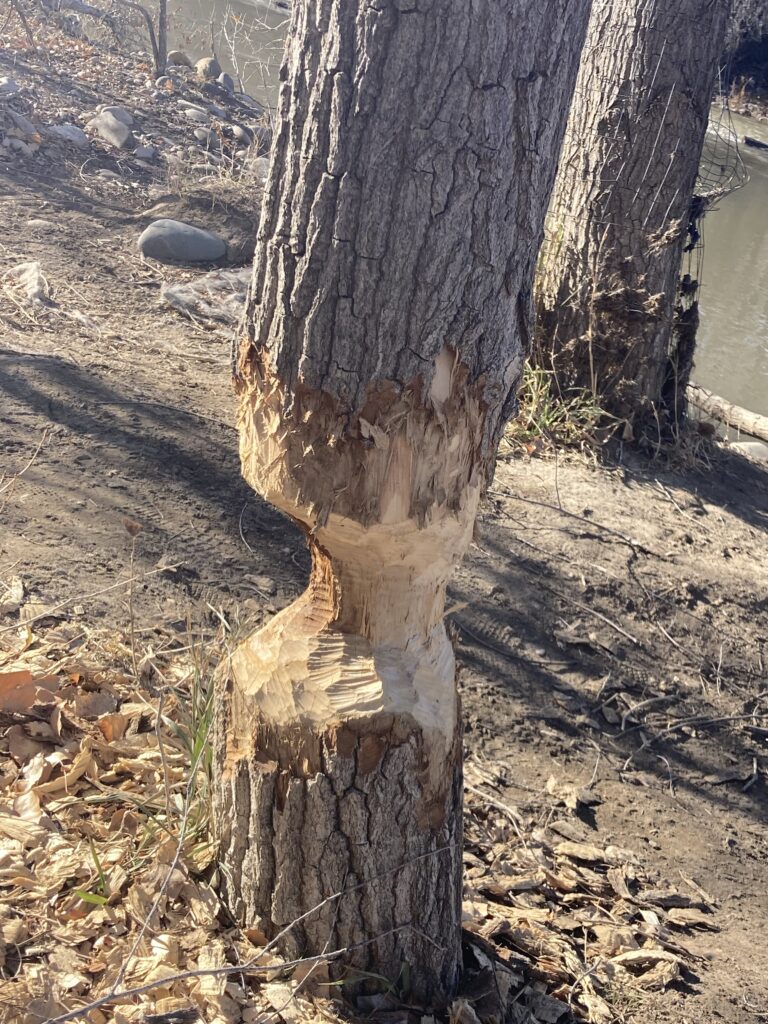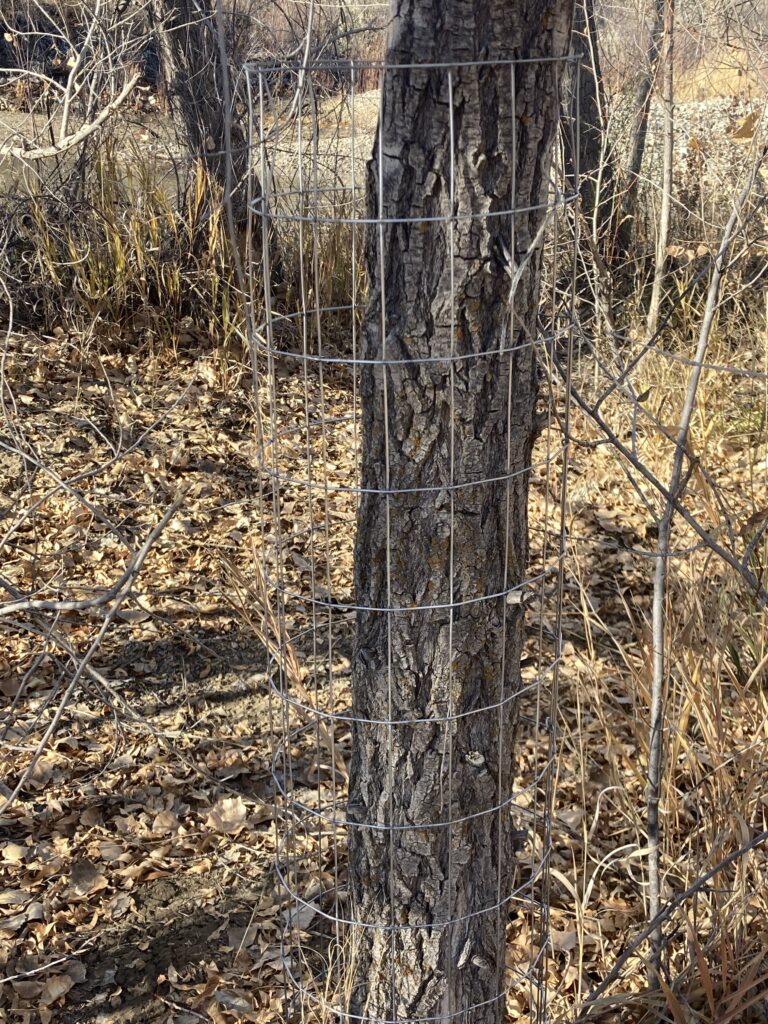

Photo by Sarah Davis
There are some big changes happening in the Paonia River Park, and not at the hands of WSCC’s amazing team of volunteers. Beavers have moved into the Park, and are redecorating accordingly. This may seem concerning to many Park visitors, with the sudden felling of trees and increased water levels, but there is much more to celebrate about our busy new neighbors than there is to fear.
Beavers are the largest rodents native to North America and can be found along rivers, streams, and ponds where willow, aspen, alder, or cottonwood are present. They eat the young, upper branches, bark, and leaves of trees, which is why they spend so much of their time chewing down trees to get to them. This is also why so many trees that are felled tend to simply stay there, as the beavers drag away the branches they want to eat or store for winter, and leave the rest of the tree behind to decompose. Many trees, such as willows and cottonwoods, which have evolved alongside beavers, are able to regenerate from their roots and stumps, so beavers actually end up pruning rather than outright killing the trees.
Beavers are a keystone species in riparian ecosystems due to their impact on water levels and vegetation. They slow the flow of streams and rivers as well as raise the water table and improve water quality through added filtration. So, what does this mean for our Paonia River Park?

Photo taken in River Park by Sarah Davis
As many visitors have already noticed, several willow and cottonwood trees in the River Park have been felled due to beaver activity. Consistent with their behavior, the beavers have largely left lower branches and trunks and taken upper branches, leaving many stumps and logs in the Park. Over time, these turn into soil and support new trees. Though this may appear like damage for the moment, it is actually an indicator of a very healthy Colorado riparian ecosystem. With fewer trees, more light will reach vegetation on the ground, allowing young trees and other flora to flourish. The beaver activity will also likely slow and spread the water in the North Fork of the Gunnison River, thus extending the river’s high flow period later into the season which will in turn provide an extended water table for the roots of neighboring trees. This will help expand the riparian corridor adjacent to the wetland. Additionally, the beaver’s dams and food stores create safe places for young fish to hide from predators such as brown trout, raccoons, and herons. This will enable more fish and plant species to thrive.
Even with these positive impacts, WSCC has a responsibility to maintain the Paonia River Park as a space that can be enjoyed for recreational use by guests. In order to minimize flood damage and preserve the trees along the trail, we have installed protective cages to prevent further felling of certain trees. This will help us to maintain shade areas on the walking trails and retain the treeline along the river. Moving forward, we will continue to monitor the effects of the beaver activity in the Park in order to take steps to maintain the balance of our Park and make it a welcoming environment for both visitors and beavers alike.

Photo by Sarah Davis
